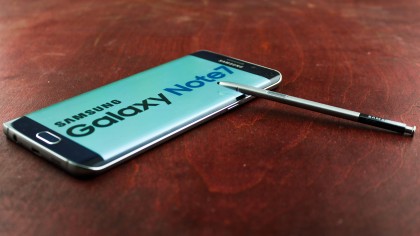Why lithium-ion batteries catch fire
The science behind Samsung's Galaxy Note 7 woes

Samsung's Galaxy Note 7 is only the latest in a long line of gadgets spontaneously catching fire. Even the systems used in planes aren't immune. But there's one thing all of those gadgets tend to have in common - a lithium-ion battery.
To understand why those batteries keep catching fire, first you need to understand how a lithium-ion battery works. On each end there's an electrode - one is positive (the anode) and the other is negative (the cathode). In between is a liquid called an electrolyte. When charging, the lithium ions move to the anode, and when discharging they move to the cathode. Pretty simple.
Moving too fast
The problem comes when they move too fast. The rate at which lithium-ion batteries charge is carefully limited so that the lithium doesn't move too quickly - which, incidentally, is why batteries take time to charge.
If it moves too fast, lithium plates begin to form around the anode, creating a short circuit and generating heat. That heat, if it builds up, can ignite the flammable electrolyte, and you've got a battery fire.
That's not the only thing that can cause a short circuit. If, during the manufacturing process, small holes are created or fragments of metal are left behind in the casing, then the same thing can happen. So too can stabbing a battery with a knife. The greater number of cells used in newer devices increases the chance of a failure.
It's all about the electrolytes
Quality controls in battery factories prevent this from happening too often, but occasionally there's something they miss. Samsung hasn't yet said what's causing the fires seen in the Galaxy Note 7, but it's investigating, ultimately leading to the Note 7 to be shelved for good.
In the meantime, chemists are working on developing new types of battery that aren't quite so explosive. Automatic shutdown designs, non-flammable electrolytes and more efficient alternative materials are all in development, to a greater or lesser extent.
Sign up for breaking news, reviews, opinion, top tech deals, and more.
Re-rewind
So don't worry - safer batteries are on the way. But for now, it's probably wise to check the battery in your smoke alarm from time to time, and keep one eye on your charging devices.
Jay Whitacre, a professor of materials science and engineering at Carnegie Mellon University, told Wired in 2015: "There is no way to tell when buying, since the catastrophic failure likely will not manifest until the battery is fully charged and discharged several times."
Duncan Geere is TechRadar's science writer. Every day he finds the most interesting science news and explains why you should care. You can read more of his stories here, and you can find him on Twitter under the handle @duncangeere.
